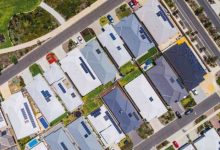Proponents of virtual power plants – the systems that link potentially thousands of distributed devices such as rooftop solar, battery storage and electric vehicles – have won a major victory after proposed changes to metering rules were dumped in the face of a volley of protests.
Earlier this year, Australian energy companies and new technology providers warned that new proposals from the Australian Energy Market Operator could effectively kill the market for “virtual power plants”, considered critical for smoothing the transition towards a 100 per cent renewables grid.
The concern centred around AEMO’s draft amendments to what is known as the Market Ancillary Service Specification, a key ruling that will shape the development of VPPs around the country, and particularly the idea that individual installations would will require high speed metering down to 50 milliseconds.
Almost everyone in the industry said that would be a bad idea, and would effectively kill the prospect of VPPs, leaving AEMO to deal with what Tesla described as more than 50GW of “uncontrollable, passive, invisible DER” serving the needs of individual customers, and creating system security concerns for the grid.
AEMO this week announced it has finalised its rulings on MASS, and – after further studies by the University of Melbourne – agreed that a 200 millisecond response to frequency control signals is adequate for a system included a minimum of 25 sites, and the metering can be located “at or near” the locations.
The decision has been warmly welcomed.
“AEMO has listened to the industry and came up with a sensible compromise which has brought about a pretty good outcome for the market moving forward,” said SolarEdge’s James Sturch.
“The location of metering also works well as ‘at or close’ to the connection point, which is fair and doable,” he said, adding that the transitional arrangements to June 30, 2023, for existing and demonstration VPPs is also a good outcome.
“This is great,” said another executive who declined to be named. “It means that distributed devices, such as batteries, won’t require an expensive utility-grade meter at around $5,000 or more. That would have been too expensive and would have killed VPPs.”
Several insiders credited an intervention from new CEO Daniel Westerman for the changes to the original proposal, recognising that it is critical to provide the tools needed for the forecast 100 per cent “instant” penetration of wind and solar, which is expected to be commonplace by 2025.
“The energy transition is accelerating globally beyond expectations, and the world is looking to Australia for technical leadership and innovation that can support a rapid electrification and decarbonisation of the energy system,” Evergen said in its earlier submission.
“The move from small numbers of large generators dispatching power, to many thousands of inverter connected devices doing so as part of a harmonious system requires new ways of thinking and new approaches to system orchestration.”








